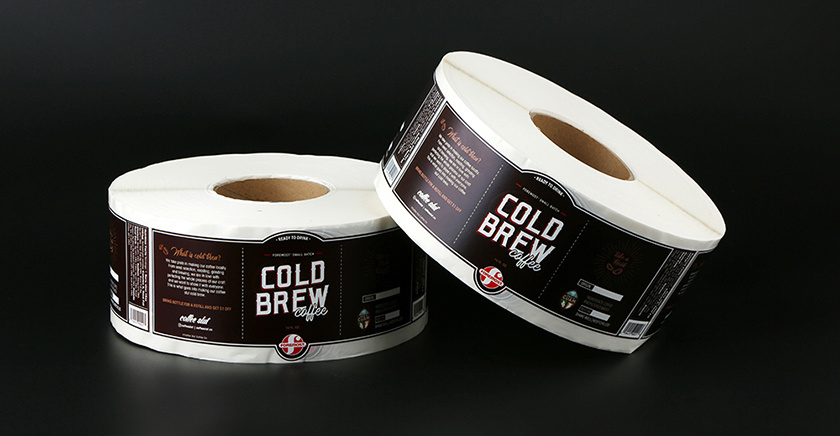Introduction to Adhesive Products
Release time:
2021-04-14
Self-adhesive labels, also known as self-adhesive label materials, are composite materials made of paper, film, or special materials as the face material, with adhesive coated on the back, and silicone release paper as the backing.

Structure
1. Face Material: This is the carrier of the content of the self-adhesive label, with adhesive coated on the back of the face paper. There are many materials that can be used for face material, generally divided into coated paper, transparent PVC, static PVC, polyester (PET), laser paper, temperature-resistant paper, polypropylene (PP), polycarbonate (PC), kraft paper, fluorescent paper, gold foil paper, silver foil paper, synthetic paper, aluminum foil paper, fragile (anti-counterfeiting) paper, masking tape, fabric labels (Tyvek/Nylon), pearlescent paper, sandwich coated paper, and thermal paper.
2. Film Layer Material: Transparent polyester (PET), semi-transparent polyester (PET), transparent oriented polypropylene (OPP), semi-transparent oriented polypropylene (OPP), transparent PVC, glossy white PVC, matte white PVC, synthetic paper, glossy gold (silver) polyester, matte gold (silver) polyester.
3. Adhesive: General super sticky type, general strong sticky type, refrigerated food strong sticky type, general re-peelable type, fiber re-peelable type. It ensures moderate adhesion between the backing and the face paper, while also ensuring that after the face paper is peeled off, it can still adhere firmly to the adhered item.
4. Backing Material: Release paper, commonly known as "backing paper," has a low surface energy non-stick surface. The backing paper acts as a barrier to the adhesive, allowing the face paper to easily peel off from the backing. Common types include white, blue, yellow glassine paper or onion paper, kraft paper, polyester (PET), coated paper, polyethylene (PE).
Materials
1: Face Material Used: wood free paper, coated paper art paper (opaque/mirror), transparent PVC, static PVC, polyester PET, laser paper, temperature-resistant paper, PP, PC, kraft paper, fluorescent paper, thermal paper, copper wire dragon, silver wire dragon, gold foil paper, silver foil paper, synthetic paper (CPC/PP/HYL/soft paper/pearlescent paper), aluminum foil paper, fragile (anti-counterfeiting) paper, masking tape, fabric labels (Tyvek/Nylon), pearl dragon, sandwich coated paper, thermal paper.
2: Film Types Used: transparent PET, semi-transparent PET, transparent OPP, semi-transparent OPP, transparent PVC, glossy white PVC, matte white PVC, synthetic paper, glossy gold (silver) polyester, matte gold (silver) polyester.
3: Adhesive Types Used: general super sticky type, general strong sticky type, refrigerated food strong sticky type, general re-peelable type, fiber re-peelable type.
4: Backing Paper Used: white, blue, yellow glassine paper (or onion paper) kraft paper, polyester PET, coated paper, polyethylene.
Classification
Self-adhesive labels are roughly divided into two types: one is paper-based self-adhesive labels, and the other is film-based self-adhesive labels.
1. Paper-based self-adhesive labels are mainly used for liquid cleaning products and popular personal care products; film-based materials are mainly used for mid-to-high-end daily chemical products. Currently, the market for popular personal care products and household liquid washing products occupies a large share, so corresponding paper materials are used more frequently.
2. Film-based self-adhesive labels commonly use PE, PP, PVC, and other synthetic materials, with film materials mainly available in white, matte, and transparent. Due to the poor printability of film materials, they are generally treated with corona or coated on the surface to enhance printability. To avoid deformation or tearing of some film materials during printing and labeling, some materials are also subjected to directional treatment, undergoing unidirectional or bidirectional stretching, such as the widely used biaxially oriented BOPP material.
Related News
Transparent PET protective film: Why choose it?
2025-02-26
Black PVC sheets are divided into glossy black PVC sheets and matte black PVC sheets.
2025-02-26
Various presentations of adhesive labels
2021-04-02
Introduction to Microporous Membrane Filters
2021-04-02
Introduction to Adhesive Products
2021-04-14
Introduction and Development Trend Analysis of PET Adhesive Labels
2021-04-14
